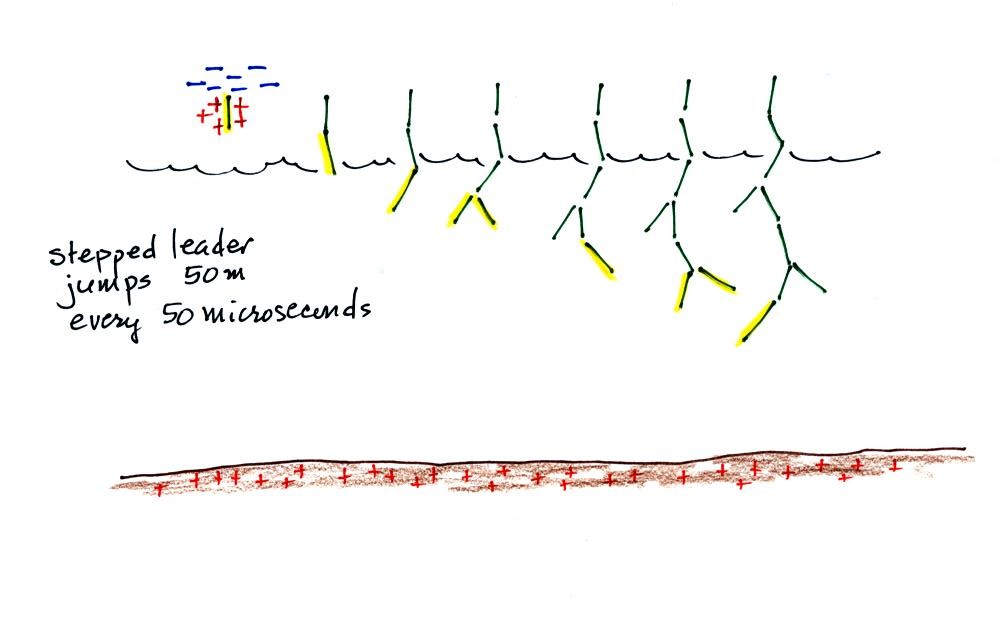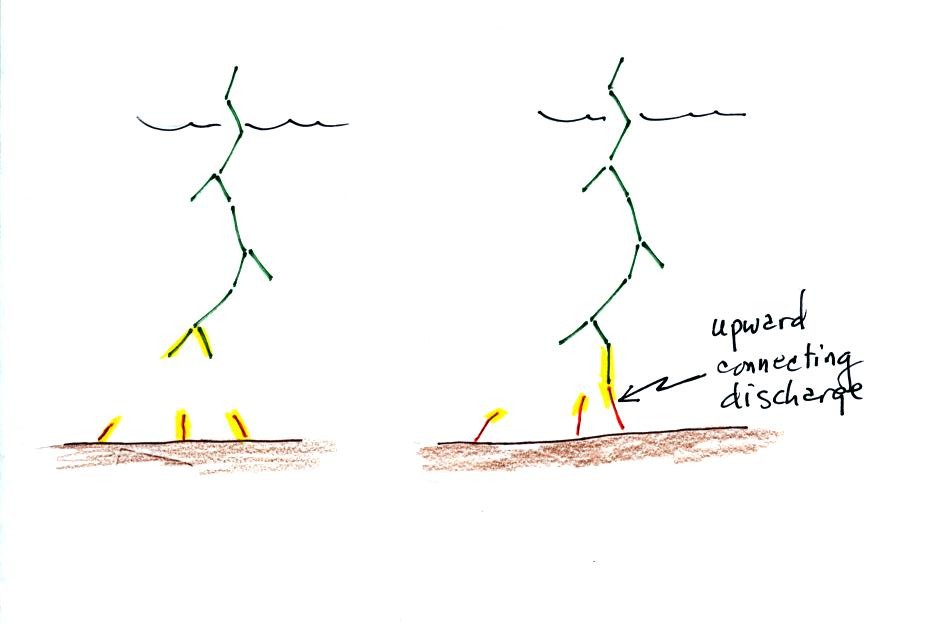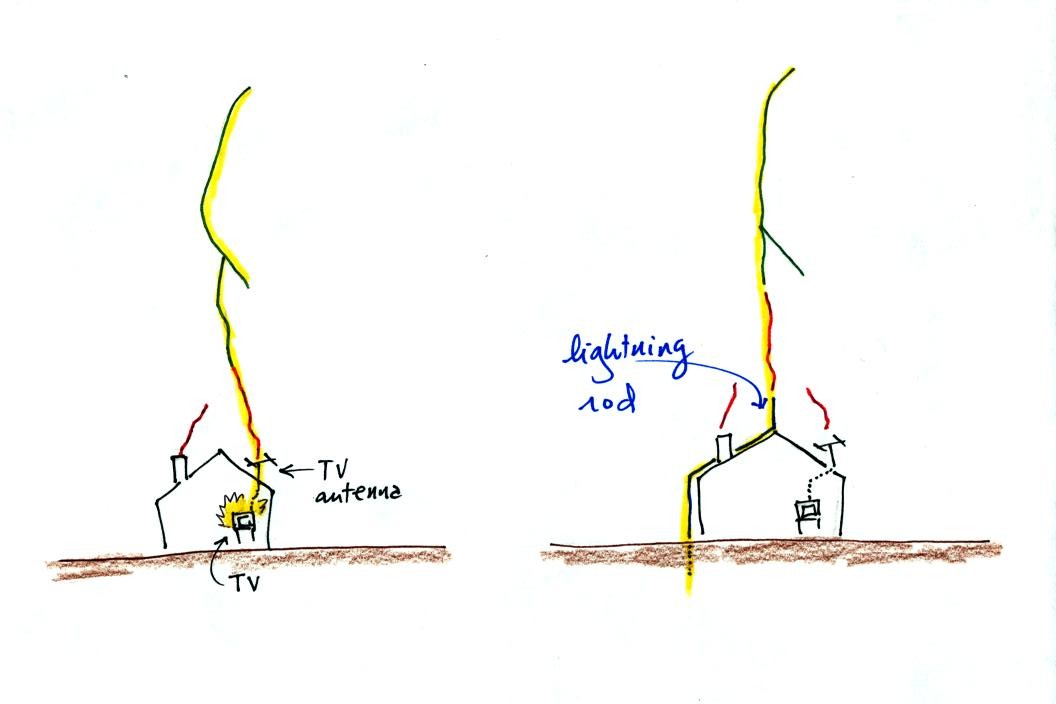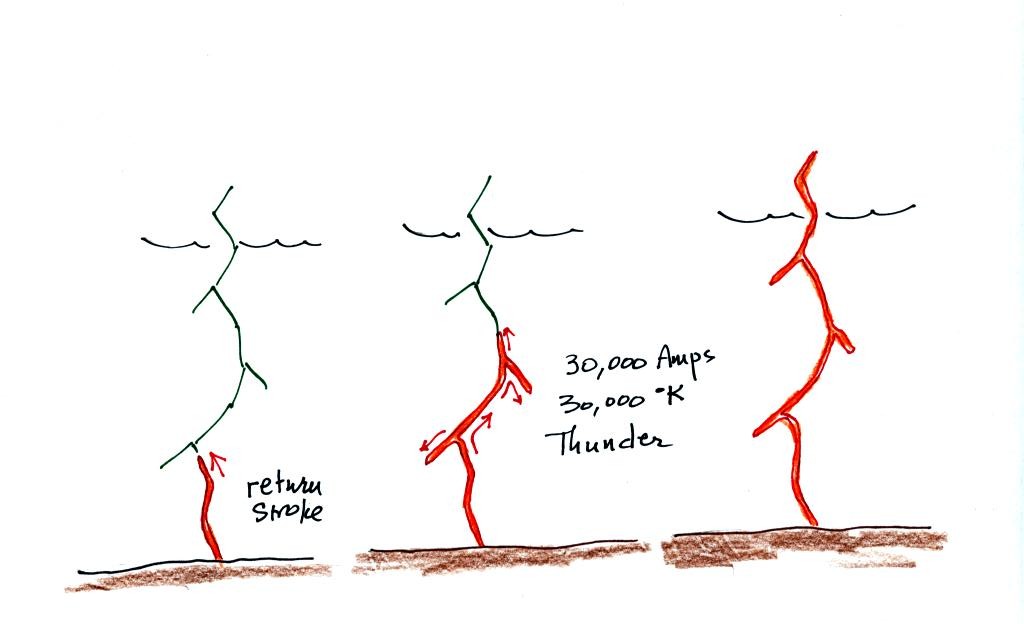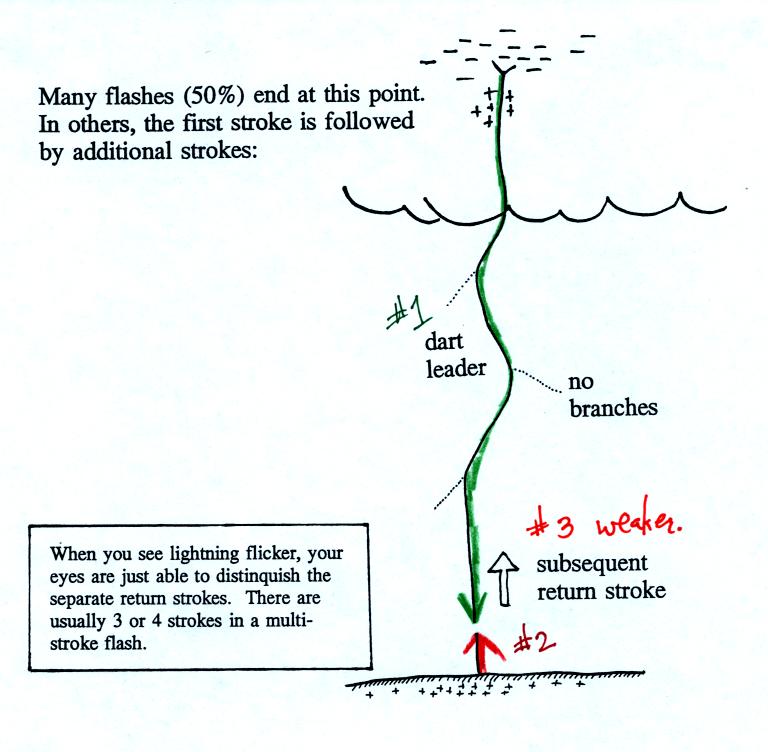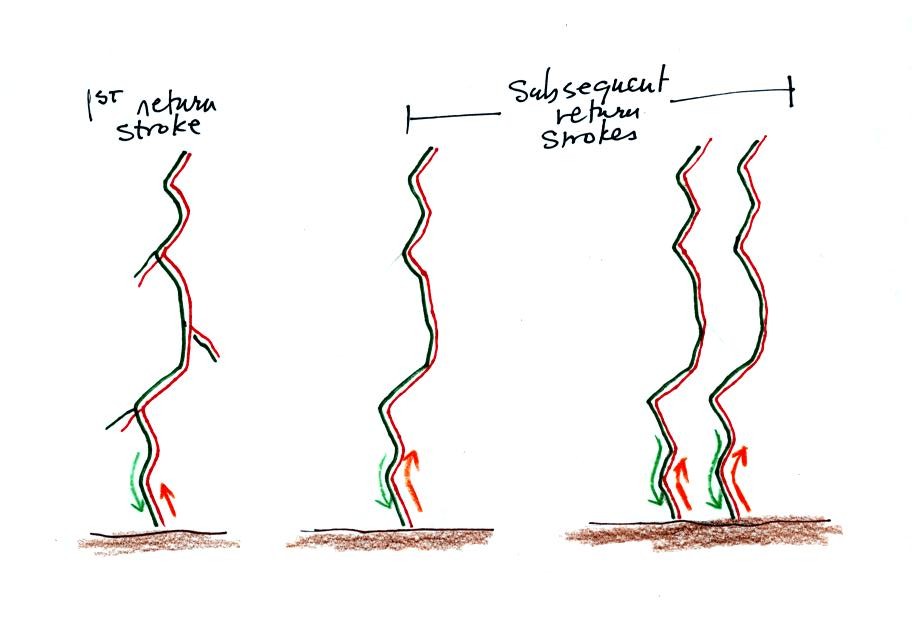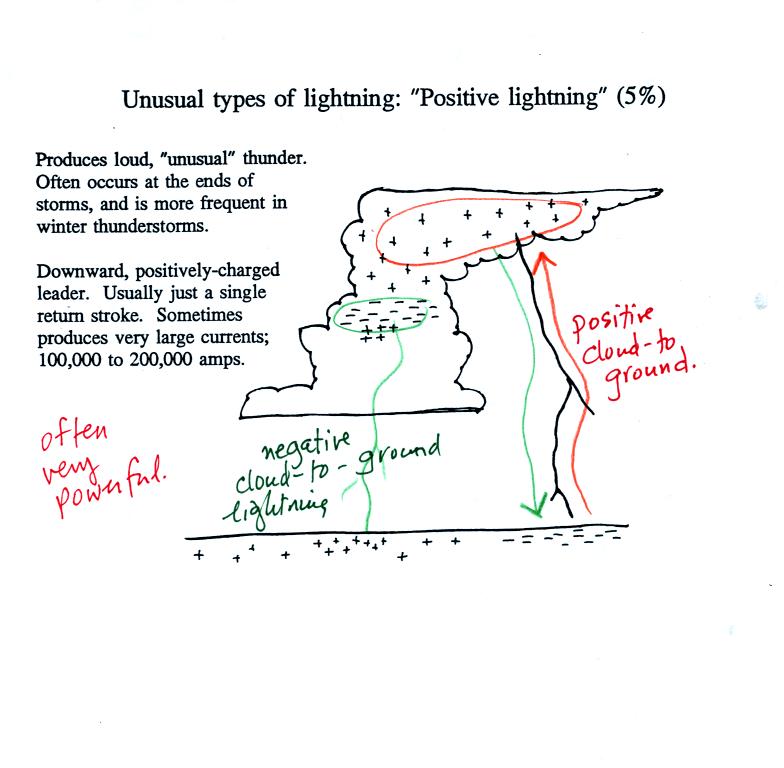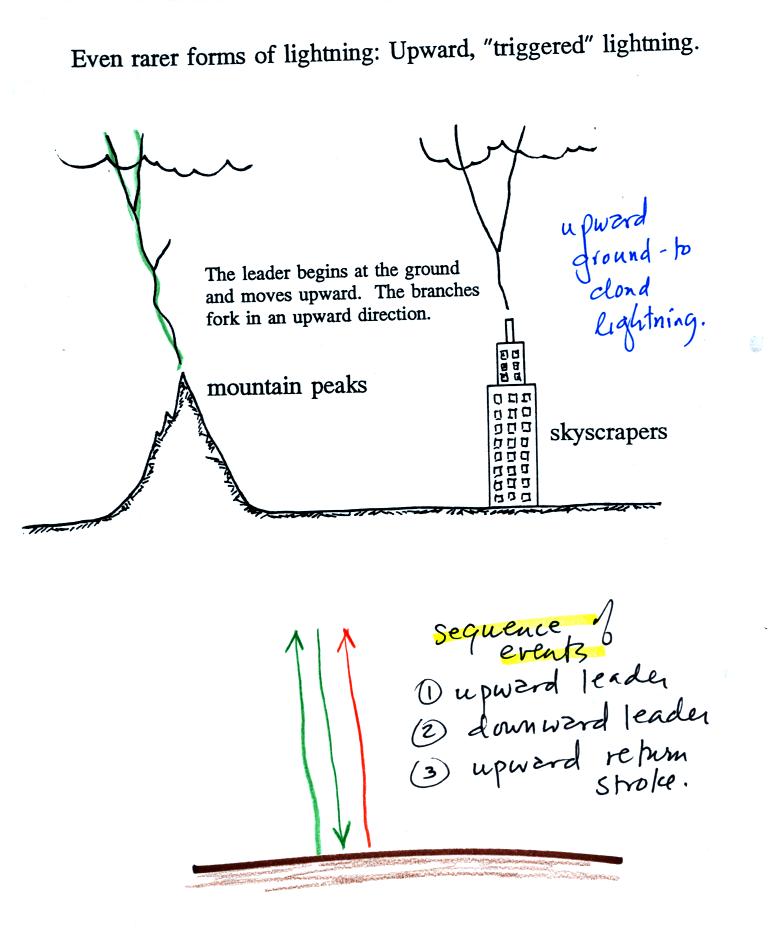Monday Dec. 1st, 2008
click here to download today's notes
in Microsoft WORD format
Some relatively soothing music today from Melody Gardot.
All of the experiment reports that I had in my possession have been
graded and can be picked up in class. First drafts can be revised
but revised reports need to be turned in as soon as possible. The
1S1P Topic #8 (story) reports have been graded. Several people have now earned 45 1S1P
pts, the maximum number allowed. The list is likely to change on
an almost daily basis as additional 1S1P reports are graded.
Pt. 1 and Pt.
2 of the Quiz #4 Study Guide are now available online.
Click on this link,
for a brief introduction to lightning, the topic of today's class.
Lightning kills about 100 people every year in the United
States (more than tornadoes or hurricanes but less than flooding,
summer heat and winter cold) and is the cause of about 30% of all power
outages. In
the western United States, lightning starts about half of all forest
fires. Lightning caused fires are a particular problem at the
beginning of the thunderstorm season in Arizona. At this time the
air underneath thunderstorms is still relatively dry. Rain
falling from a thunderstorm will often evaporate before reaching the
ground. Lightning then strikes dry ground, starts a fire, and
there isn't any rain to put out or at least slow the spread of the
fire. This is so called dry lightning.
Lighning is most commonly produced by thunderstorms (it has also
be observed in dust storms and volcanic eruptions).

A typical summer thunderstorm in Tucson (found on p. 165 in the
photocopied Classnotes). Remember that
even in the summer
a large part of the middle of the middle of the cloud is found at below
freezing temperatures and contains a mixture of super cooled water
droplets and ice crystals. This is where the ice crystal process
of precipitation formation operatures and is also where electrical
charge is created. Doesn't it seem a little unusual that
electricity can be created in such a cold and wet environment?

A couple of interesting things that can happen at the ground when the
electrical forces get high enough. Attraction between positive
charge in the ground and the layer of negative charge in the cloud can
become strong enough that a person's hair will literally stand on end
(see p. 307 in your text, reproduced below). This is incidentally
a dangerous situation to be in as lightning might be about to
strike. St. Elmo's fire is a faint
electrical discharge that sometimes develops at the tops of elevated
objects during thundestorms. It was first observed coming from
the tall masts of sailing ships at sea (St. Elmo is the patron saint of
sailors).

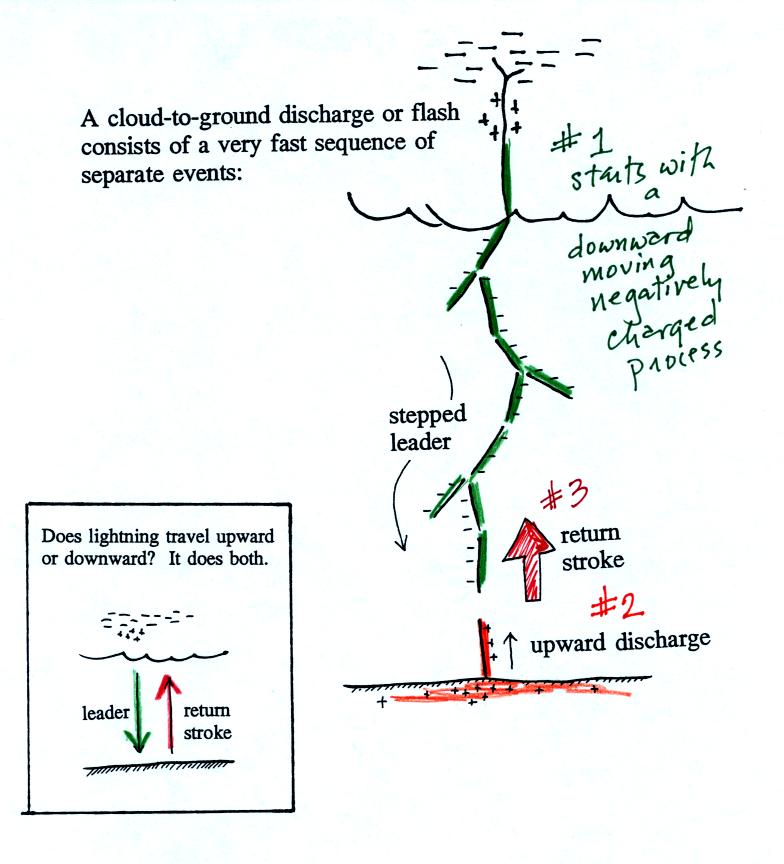
A sequence of stepped leader steps. Note each of the
channels in the drawing should actualy be superimposed on each
other. There is just a single channel that every 50
microseconds
of so gets 50 meters longer.
Several
positively charged upward discharges begin to travel upward from the
ground. One
of these will eventually intercept the stepped leader.
This
is what determines what will be struck by the lightning.
Lightning doesn't really know what it will strike until it gets close
to the ground. Lightning rods take advantage of this principle.
Houses with and without lightning rods
are
shown
above. When lightning strikes the house without a lightning rod
the powerful return stroke travels into the house destroying the TV and
possibly starting the house on fire.
A lightning rod is supposed to intercept the stepped leader and safely
carry the lightning current around the house and into the ground.
The
connection between the stepped leader and the upward discharge creates
a "short circuit" between the charge in the cloud and the charge in the
ground. A powerful current travels back up the channel from the
ground toward the cloud. This is the return stroke. Large
currents (typically 30,000 amps in the first return stroke)
heat the
air to around 30,000K (5 times hotter than the
surface of the sun) which causes the air to explode. When you
hear thunder, you are hearing the sound produced by this explosion.
I forgot to show this
stepped leader - upward connecting discharge - return
stroke
animation
Many cloud-to-ground flashes end at this point. In
about 50% of cloud to ground discharges,
the stepped leader-upward
discharge-return stroke sequence repeats itself with a few subtle
differences.
A downward dart leader travels from the cloud to the
ground. The dart leader doesn't step but travels smoothly and follows
the channel created by the stepped leader (avoiding the
branches). It is followed by a slightly less powerful subsequent
return stroke that travels back up the channel to the cloud.
A normal still photograph would capture the
separate
return strokes
superimposed on each other. If you bumped or moved the camera
during the photograph the separate return strokes would be spread out
on the image.
The image above shows a multiple stroke flash consisting of 4 separate
return strokes.
There is enough time between separate return strokes (around 1/10 th
second) that your eye can
separate the individual flashes of light.
When lightning appears
to flicker you are seeing the separate return strokes in a multiple
stroke flash. The whole flash usually lasts 0.5 to 1 second.
Here are
some unusual types of lightning.
Occasionally a lightning stroke will travel from the
positive charge
region in the top of the thunderstorm cloud to ground. These
types of strikes are more common at the ends of storms and in winter
storms. This is probably because the top part of the cloud gets
pushed sideways away from the middle and bottom portions of the
cloud. Positive strokes are very powerful. They sometimes
produce an unusually loud and long lasting clap of thunder.
Here's an even rarer form of lightning. Lightning
sometimes starts at the ground and travels
upward.
Upward lightning is generally only initiated by mountains and tall
objects such as a skyscraper or a tower of some kind. Note the
discharge is different in another way also. These
discharges are initiated by an upward leader. This is followed by
not by a return stroke but by a more normal downward leader. Once
the 2nd leader reaches the ground, an upward return stroke travels back
up the channel to the cloud.
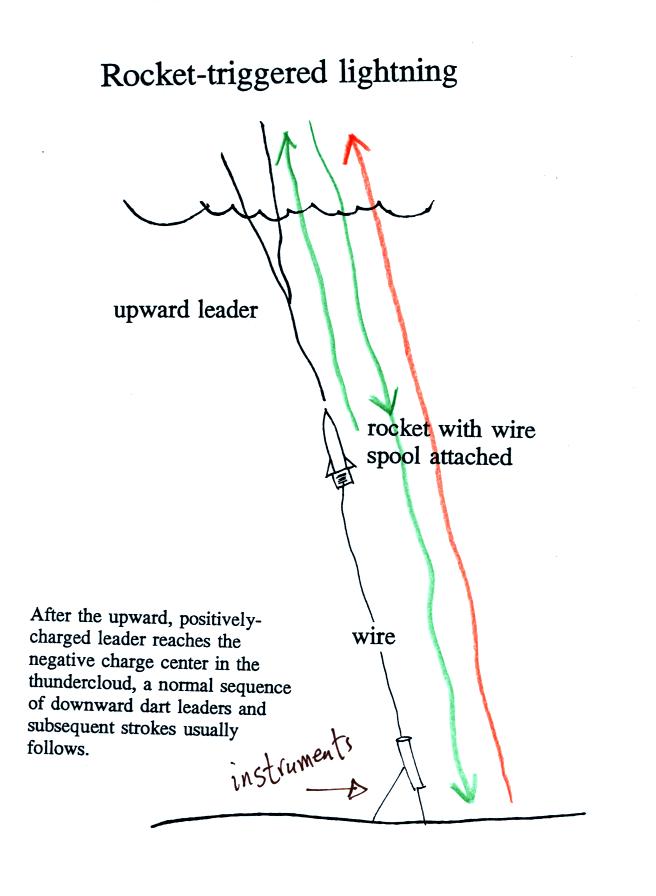
Scientists are able to take closeup photographs and make measurements
of lightning currents using triggered lightning. Triggered
lightning can also be used to test the operation of lightning
protection devices. A short video showing rocket triggered
lightning experiments will be shown in class on Friday.





